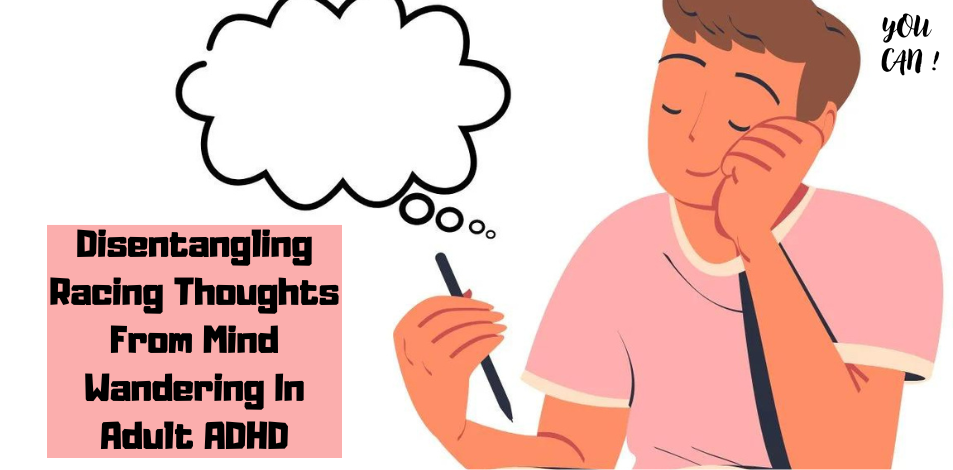
Key Points
The study aimed to distinguish between racing thoughts and mind wandering in adults with attention deficit hyperactivity disorder (ADHD).
Factor analysis revealed two distinct factors: “racing/hyperactive thoughts” and “mind wandering.”
Emotional instability was the primary predictor of racing thoughts in adults with ADHD.
Mind wandering was not significantly associated with ADHD symptoms or functional impairment.
Racing thoughts were associated with functional impairment in adults with ADHD, including interpersonal problems, academic difficulties, and additional ADHD symptoms.
The research highlights the importance of considering racing thoughts as a relevant hypothesis for explaining mental anxiety in adults with ADHD.
Limitations of the study include reliance on self-report measures and lack of comparison groups.
Rationale
Mental anxiety is a common complaint among adults with ADHD, often described as thoughts that are “running around” (Asherson, 2005; Weyandt et al., 2016).
Previously, this experience was primarily attributed to excessive distractibility (Asherson et al., 2016).
However, the description of racing thoughts, primarily associated with bipolar disorder, is also consistent with mental anxiety reported in ADHD (Piguet et al., 2010; Weiner et al., 2018).
While studies have shown increased mind wandering in adults with ADHD compared to healthy controls (Shaw & Giambra, 1993; Biederman et al., 2019), recent research has also found elevated rates of racing thoughts in ADHD compared to hypomanic patients with bipolar disorder (Martz et al., 2021).
This suggests that both mind-wandering and racing thoughts may contribute to mental distress in ADHD.
Given the potential clinical importance of distinguishing between these phenomena, this study aimed to separate mind wandering from racing thoughts in adults with ADHD and investigate their association with ADHD symptoms and functional impairment.
Methods
The study used a quantitative approach using self-reported questionnaires to assess racing thoughts, mind wandering, and ADHD symptoms.
Factor analysis and multiple linear regression were performed to analyze the data.
Procedure
Participants completed a battery of self-reported questionnaires measuring racing thoughts, intentional and spontaneous mind wandering, daydreaming frequency, and ADHD symptoms.
The study design was cross-sectional.
Sample
The sample consisted of 84 adults with ADHD (57.12% female, mean age 32.48 years, SD = 10.23).
Participants were recruited from the outpatient psychiatric clinics of the University Hospital of Strasbourg.
The diagnosis of ADHD and its comorbidities was determined by senior psychiatrists based on DSM-5 criteria.
Measures
The 13-item Racing and Cramming Thoughts Questionnaire (RCTQ-13): assesses three aspects of racing thoughts (thought hyperactivity, thought hyperactivity burden, and thought hyperarousal) experienced in the last 24 hours.
Deliberate Mind-Wandering Questionnaire (MW-D): Measures the tendency to intentionally engage in mind-wandering in daily life.
Spontaneous Mind-Wandering Questionnaire (MW-S): Assesses the tendency to experience unintentional mind-wandering in everyday situations.
Daydreaming Frequency Scale: Assesses the extent to which individuals experience mind-wandering and daydreaming in their daily lives.
Winder-Reimhaer Adult Attention-Deficit Disorder Scale (SR-WRAADDS): Assesses global ADHD symptoms, including inattention, hyperactivity, disorganization, and emotional disturbance, as well as their impact on daily functioning.
Statistical Measures
Factor analysis was performed with principal components extraction and varimax rotation. Multiple linear regression analyses were performed to examine the relationships between ADHD symptoms, racing thoughts, mind-wandering, and functional impairment.




